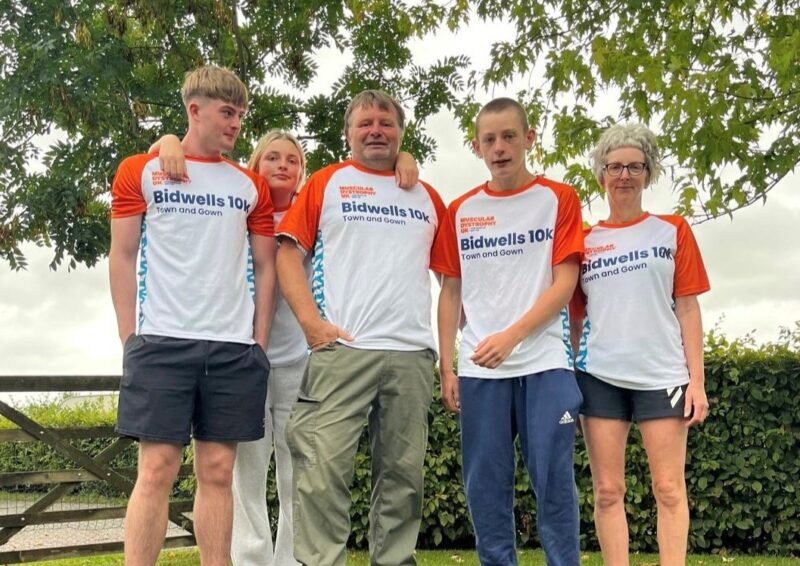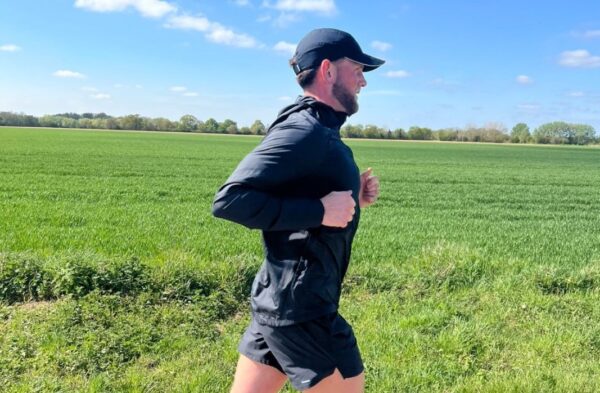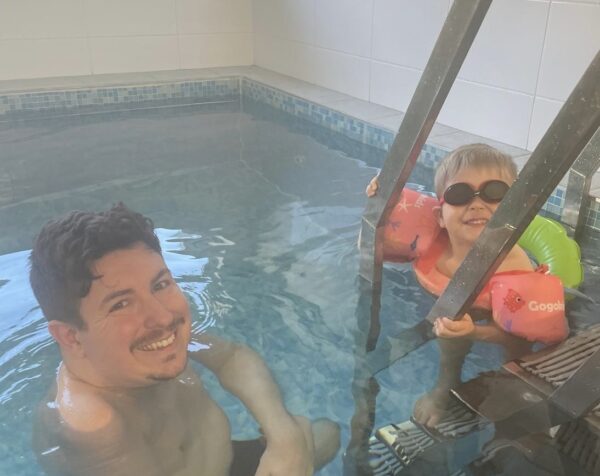| LGMDR1
calpainopathy
(LGMD2A) |
CAPN 3 |
- Symptoms usually start in children aged 8-15, but can start between ages of 2 and 40 years
- Usually develops slowly or moderately fast
- May be mild to severe muscle weakness
- Affects pelvic muscles first, followed by shoulder muscles
- May cause stiff joints (contractures)
- Shoulder blades may stick out (scapular winging)
|
Low chance of mild heart problems
Chance of mild breathing problems in later life |
| LGMDR2
Dysferlinopathy
Miyoshi myopathy
(LGMD2B) |
DYSF |
- Symptoms usually start in young adulthood
- Usually develops slowly
- May cause calf muscle weakness
- Causes muscle weakness in the pelvis and shoulders
|
Heart and breathing not usually affected |
LGMDR3
LGMDR4
LGMDR5
LGMDR6
Group name: Sarcoglycanopathies
(LGMD2D,LGMD2E, LGMD2C, LGMD2F) |
SGCA
SGCB
SGCG
SGCD
|
- Symptoms usually start in childhood
- Develops at different rates from person to person but can be fast in children
- May be mild to severe muscle weakness
- May cause stiff joints (contractures)
- Shoulder blades may stick out (scapular winging)
|
Heart problems can be common and severe but are rare in LGMDR3
Breathing problems are common |
| LGMDR7
(LGMD2G) |
TCAP |
- Symptoms usually start in childhood or teenage years
- Starts with weakness in leg muscles
- Some people may need to use a wheelchair by age 40
|
About half of people have heart problems
No breathing problems |
| LGMDR8
(LGMD2H) |
TRIM32 |
- Symptoms usually start in young adulthood
- Starts with mild to severe leg muscle weakness
- May affect arm muscles later on
- May cause mild weakness of face muscles
|
May cause heart problems
No breathing problems |
| LGMDR9
(LGMD2I) |
FKRP |
- Common in the UK and northern Europe
- Symptoms usually start at 10-20 years of age
- May be mild to severe
- Develop at different rates but may be fast in young children
- May cause stiff joints (contractures)
|
May cause heart and breathing problems |
| LGMDR10
Titinopathy
(LGMD2J) |
TTN |
- Symptoms usually start between ages of 10-30 years
- Causes severe muscle weakness, which develops quickly
- Only found in Finland so far
- Other changes in the gene can cause other muscle conditions
|
May cause heart problems |
| LGMDR11
Part of a group called dystroglycanopathies
(LGMD2K) |
POMT1 |
- Symptoms start in early childhood
- Usually develops slowly
- Causes severe learning difficulties
- Has been found in a few Turkish and English families
|
Sometimes common |
| LGMDR12
(LGMD2L) |
ANO5 |
- Symptoms usually start in adulthood
- May have weakness in calf muscles
- Thigh and upper arm muscle weakness may affect one side of the body
- Develops very slowly
- Muscle pain is more likely than in other types of LGMD
|
May cause heart and breathing problems |
| LGMDR13
Part of a group called dystroglycanopathies
(LGMD2M) |
FKTN |
- Symptoms usually start in early childhood
- May cause eye problems and learning difficulties
> |
Some people have heart problems |
| LGMDR14
Part of a group called dystroglycanopathies
(LGMD2N) |
POMT2 |
- Symptoms start in early childhood
- Symptoms vary from person to person
- Muscle weakness varies from mild to severe
- May cause learning difficulties and eye problems
|
Some people have heart problems |
| LGMDR15
Part of a group called dystroglycanopathies
(LGMD20) |
POMGnT1 |
- Symptoms start in early to late childhood
- Symptoms vary from person to person
- May cause eye problems
|
Some people have heart problems |
| LGMDR16
Part of a group called dystroglycanopathies
(LGMD2P) |
DAG1 |
- Symptoms start in early childhood
- May cause learning difficulties
|
Unknown, as it’s a rare condition |
| LGMDR17
(LGMD2Q) |
PLEC |
- Symptoms start in early childhood
|
Unknown, as it’s a rare condition |
| LGMDR18
(LGMD2S) |
TRAPPC11 |
- Symptoms start in early to late childhood
- Muscle weakness affects the lower body more than the upper body
|
Some people have breathing problems |
| LGMDR19
(LGMD2T) |
GMPPB |
- Symptoms start from birth to young adulthood
- May cause mild learning difficulties
- If symptoms start at birth, they may include eye and brain problems
|
Some people may have heart or breathing problems
Symptoms can overlap with congenital myasthenic syndromes (CMS), doctors may consider both when diagnosing |
| LGMDR20
(LGMD2U) |
ISPD |
- Symptoms start in childhood
- Symptoms usually develop slowly
- Can cause low muscle tone and problems with walking
- If symptoms start at birth, they may include eye and brain problems
|
May cause mild heart problems |
| LGMDR21
(LGMD2Z) |
POGLUT1 |
- Symptoms usually start in young adulthood but can start at birth or during childhood
- Develops slowly
- Mainly affects leg muscles
- Shoulder blades may stick out (scapular winging)
- Some people may start using a wheelchair from 30 to 60 years of age
|
No reports of heart problems
May cause mild breathing problems |
| LGMDR22
(Recessive Bethlem myopathy) |
COL6A1
COL6A2
COL6A3
|
- Symptoms can start from early childhood to adulthood/li>
- Often causes stiff joints (contractures)
- Can cause skin problems
|
No heart problems
May cause breathing problems in some people |
| LGMDR23
(Lamin α2-related -muscular dystrophy) |
LAMA2
|
- Symptoms start from childhood to mid-adulthood/li>
- May cause stiff joints (contractures)
- Some people have seizures
|
Some people aged over 40 years have heart problems
Breathing problems may be possible |
| LGMDR24
Part of a group called dystroglycanopathies
(POMGNT2-related muscular dystrophy) |
POMGNT2
|
- Symptoms vary from person to person
- Some people may not have symptoms
- Others may have learning difficulties and speech problems
- May cause eye problems in some people
|
Unknown, as it is a very rare condition. |
| LGMDR25
(LGMD2X) |
BVES |
- Symptoms start between teenage years and adulthood
- Muscle weakness develops slowly
- May cause problems walking
- May cause thigh and hip pain after exercise
|
May cause heart problems. |
| LGMDR26 |
POPDC3 |
- Symptoms start between teenage years and adulthood
- Muscle weakness starts in the legs
|
No heart problems. |
| LGMDR27 |
JAG2 |
- Muscle weakness usually develops slowly
- May cause weakness in face muscles
|
May cause heart problems.
May cause mild breathing problems |



